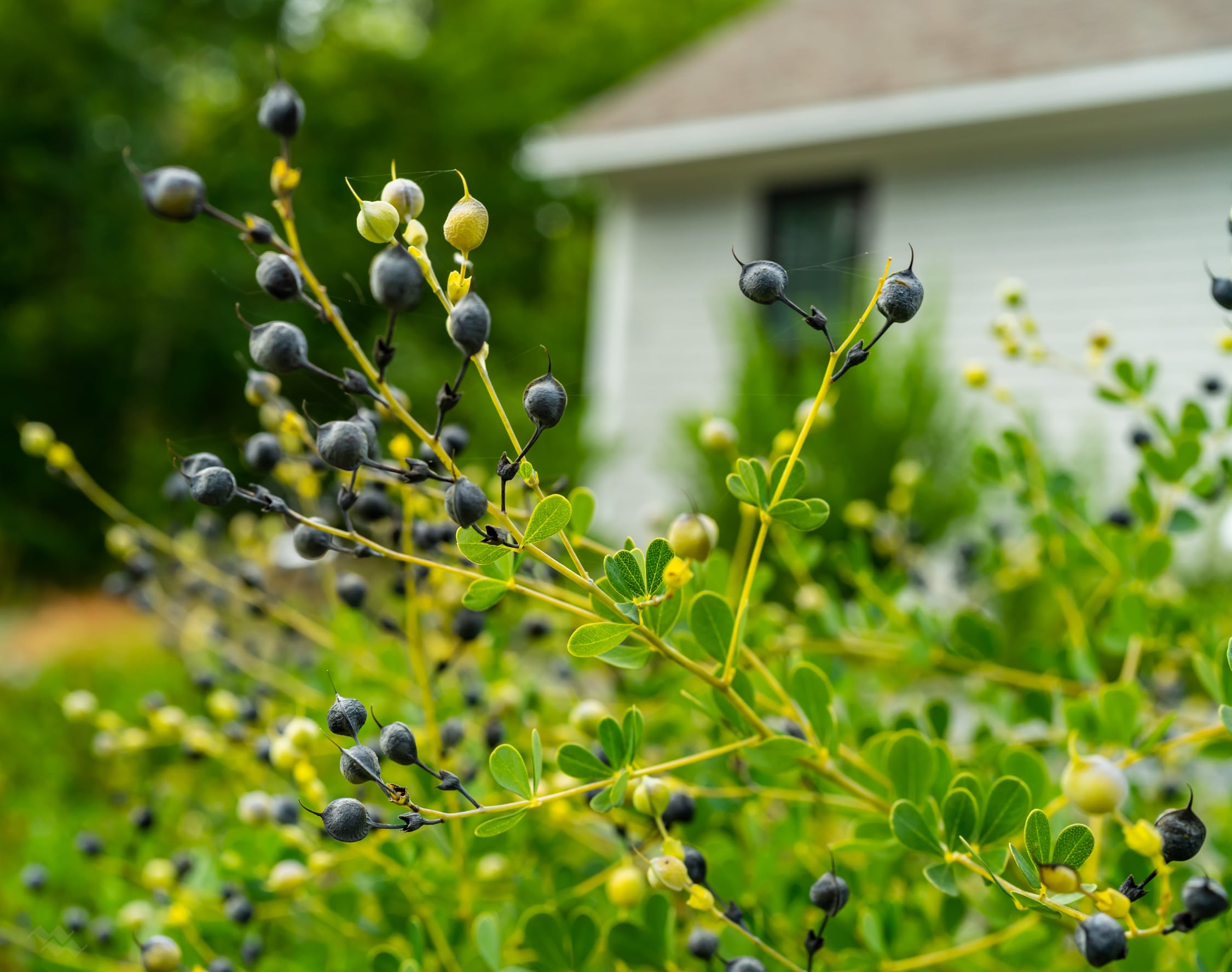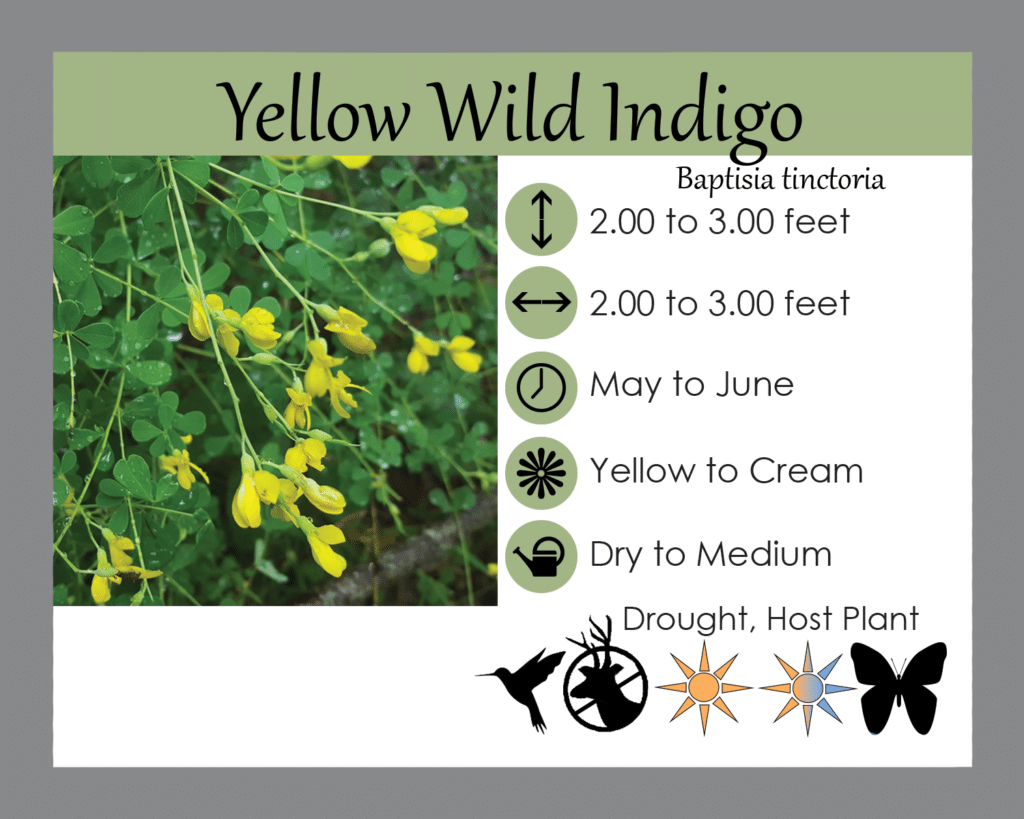Spring Blooming Beauties
Baptisia tinctoria – Yellow Wild Indigo
Easily grown in average, dry to medium, well-drained soil in full sun to part shade. Best in full sun. Tolerates drought and poor soils. Over time, plants form slowly expanding clumps with deep and extensive root systems, and should not be disturbed once established. Baptisia tinctoria commonly called wild indigo or yellow wild indigo, is an upright, smooth, shrubby perennial which typically grows 2-3′ tall and occurs in open woods and fields.
It features small, bright yellow to cream, pea-like flowers (to 1/2″ long) in numerous, sparsely-flowered clusters (terminal racemes to 4-5″) on stems extending above a foliage mound of stalkless, clover-like, trifoliate, gray-green leaves (leaflets to 1″ long). Blooms in late spring to early summer. Flowers give way to small inflated seed pods which turn black when ripe and have some ornamental interest. Seeds rattle around in the pods when ripe, thus giving rise to the sometimes common name of rattleweed for this species. Used by early Americans as a substitute, albeit an inferior one, for true indigo (genus Indigofera) in making dyes. Plants host caterpillars of Frosted Elfin, Wild Indigo Duskywing and Orange Sulfur Butterflies as well as the caterpillars of Io moths and skippers.
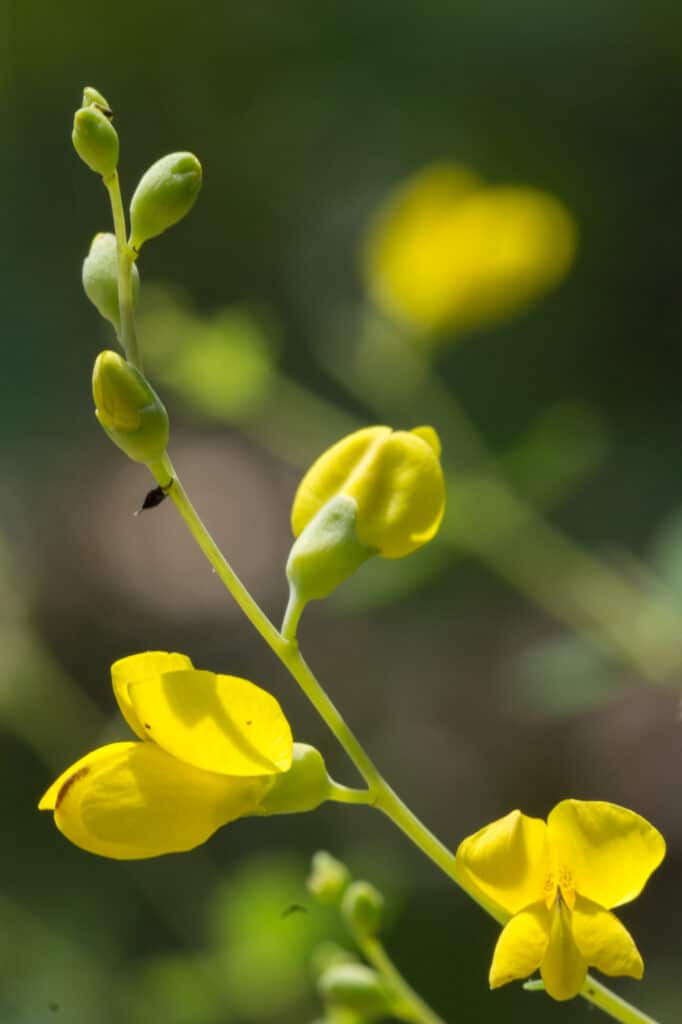
Baptisia tinctoria flowers
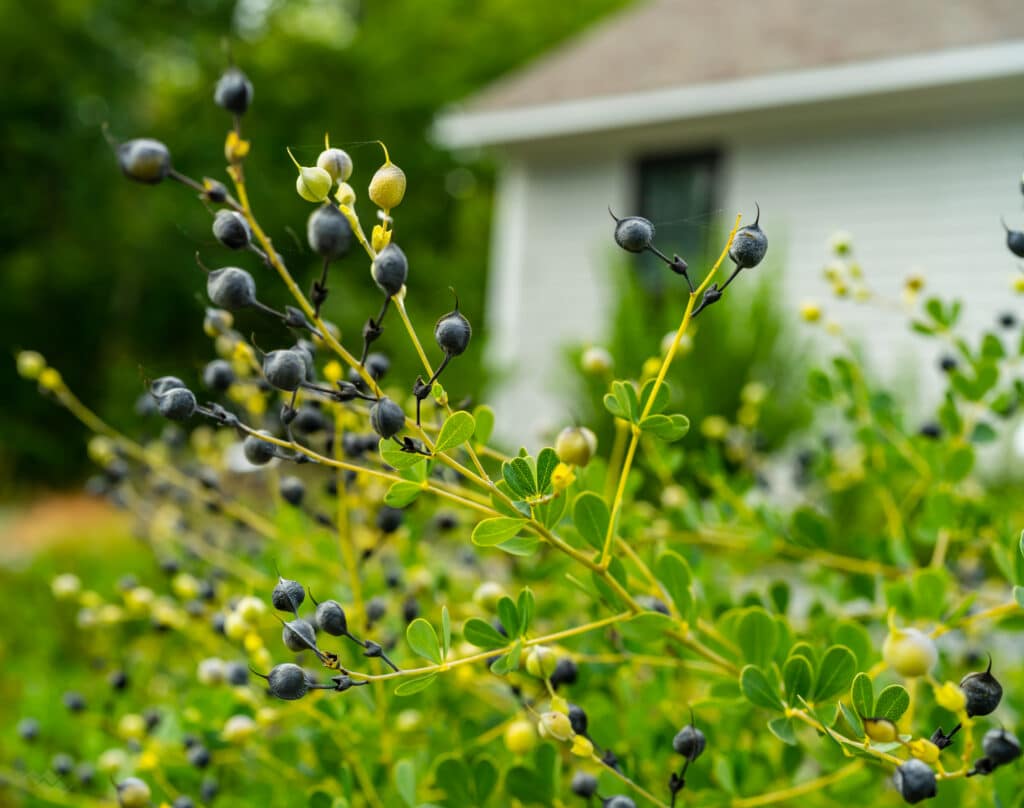
Baptisia tinctoria seeds and foliage
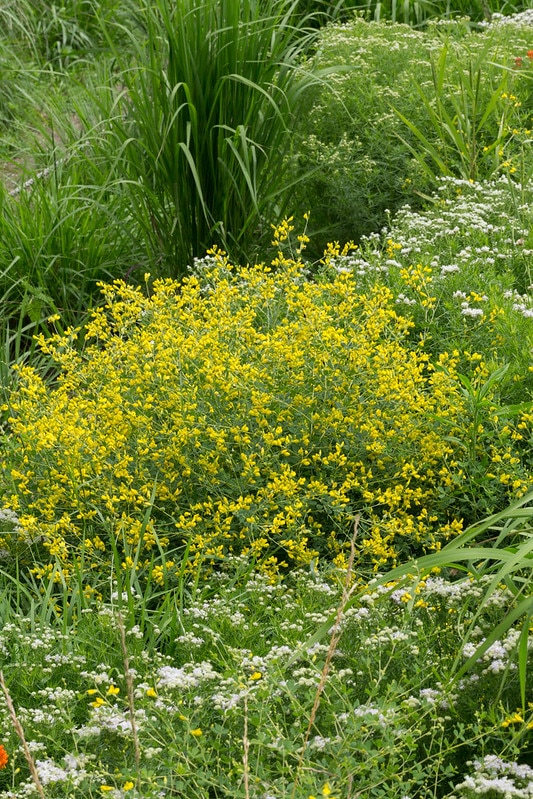
Baptisia tinctoria with Pycnanthemum tenuifolium

